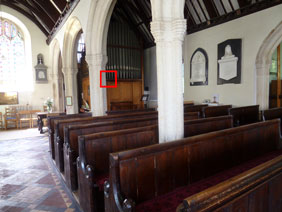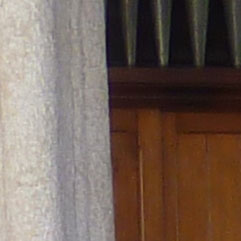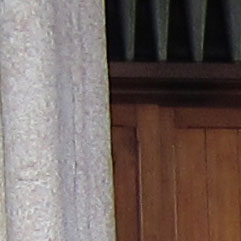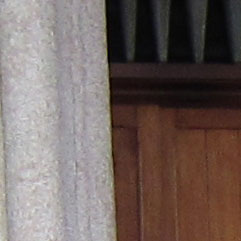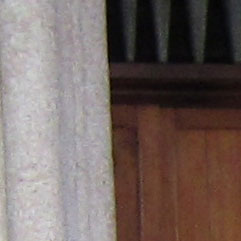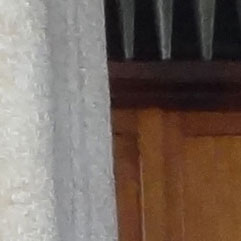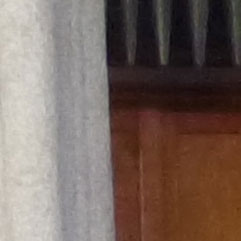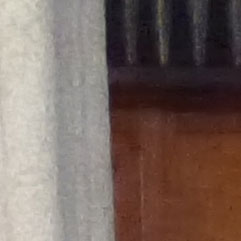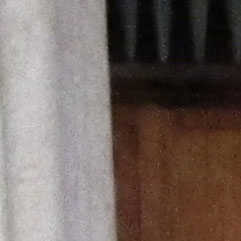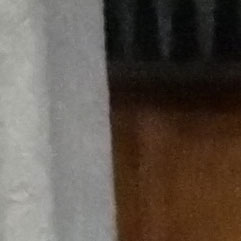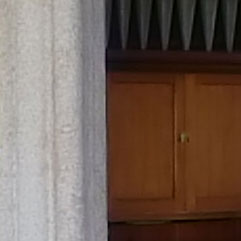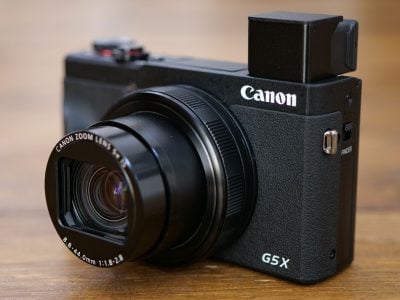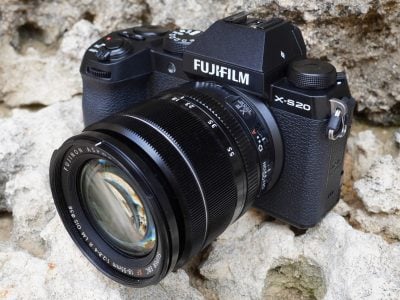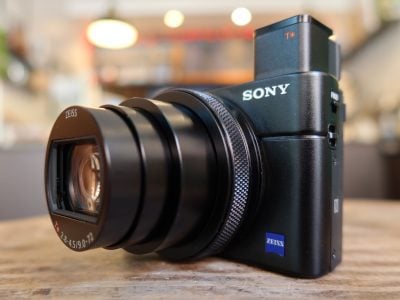Panasonic Lumix DMC-FX77 / FX78
-
-
Written by Gordon Laing
Quality
Panasonic Lumix FX77 / FX78 vs Canon IXUS 310 HS / ELPH 500 HS vs Sony Cyber-shot TX10 Resolution
|
Panasonic Lumix FX77 / FX78 |
Canon IXUS 310 HS / ELPH 500 HS |
Sony Cyber-shot TX10 | ||
 | 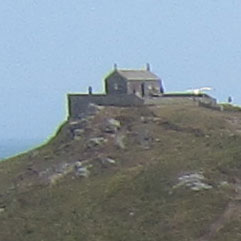 |  | ||
f2.5, 100 ISO |
f2.8 100 ISO |
f4.5, 125 ISO | ||
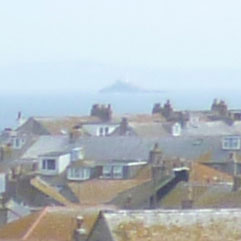 | 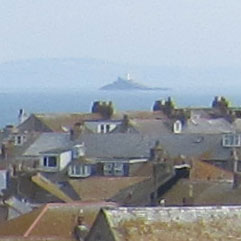 | 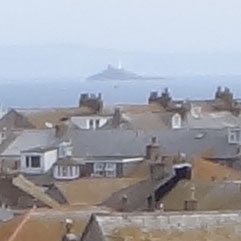 | ||
f2.5, 100 ISO |
f2.8 100 ISO |
f4.5, 125 ISO | ||
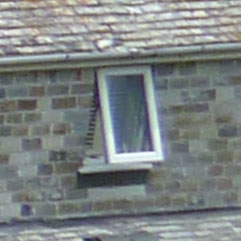 | 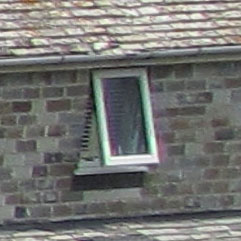 | 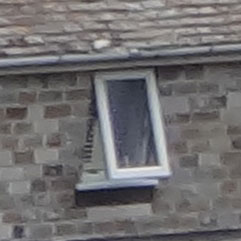 | ||
f2.5, 100 ISO |
f2.8 100 ISO |
f4.5, 125 ISO | ||
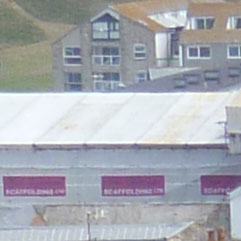 | 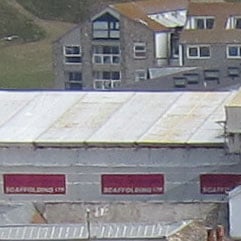 | 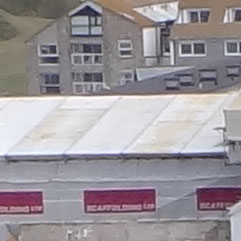 | ||
f2.5, 100 ISO |
f2.8 100 ISO |
f4.5, 125 ISO |
Panasonic Lumix FX77 / FX78 results : Real-life resolution / High ISO Noise
Panasonic Lumix FX77 / FX78 vs Canon IXUS 310 HS / ELPH 500 HS vs Sony Cyber-shot TX10 Noise
To compare noise levels under real-life conditions we shot this scene with the Panasonic Lumix FX77 / FX78, the Canon IXUS 310 HS / ELPH 500 HS and the Sony Cyber-shot TX10 within a few moments of each other using their best quality JPEG settings at each of their ISO sensitivity settings. All three cameras were set to Program auto exposure mode (called Normal Picture mode on the Lumix FX77), and the lenses were set to approximately the same field of view, in this case the widest focal length setting which is roughly equivalent on all three. The ISO sensitivity was set manually. The above shot was taken with the the Panasonic Lumix FX77 / FX78 in Normal Picture mode. The lens was set to its default wide angle setting of 4.3mm (24mm equivalent), the sensitivity was set to 100 ISO and the exposure was 1/5th of a second at f2.5. The crops are taken from the area marked with the red square and presented below at 100%. The Lumix FX77 / 78 makes a promising start. The 100 ISO crop shows good image detail and minimal noise, it’s well exposed and the white balance is good. There’s a tiny bit of graininess visible in the wood panelling, but nothing worth getting concerned over. The 200 ISO crop looks good too, but there’s a slight reduction in the amount of detail visible in the stone column and the wood panelling, so if you possibly can, it will pay you to stick with the 100 ISO setting. At 400 ISO there’s another step change, but while the Lumix FX77 / FX78’s sensor is clearly producing more noise at 400 ISO, the processing that’s working to keep it to a minimum is nicely balanced; it takes the edge off the noise without blurring or smearing fine image detail. At 800 ISO no amount of processing is going to keep the noise at bay, but the Lumix FX77 / FX78 is still producing acceptable, if a long way from pristine, results. On a 1600 ISO crop from any compact sensor it’s going to be hard to see the image for the noise and the Lumix FX77 / FX78 is no exception. There’s no 3200 ISO setting, but the Handheld Nigh Scene has produced a reasonably good result at 800 ISO, albeit at a reduced size. Compared with the the IXUS 310 HS / ELPH 500 HS the Pansonic LUMIX FX77 results look very respectable. At 100 ISO there’s little to choose between these 12 Megapixel sensors, though the Lumix FX77 looks a little softer to me. Likewise there’s less detail in the wood panelling at 200 ISO – the vertical line on the right isn’t visible on the Lumix FX77 crop. I’d say the Canon has a slight edge all the way, but it’s pretty marginal and not enough on its own to swing things in the IXUS 310 HS / ELPH 500 HS’s favour. At both 100 and 200 ISO the Lumix FX77 / FX78 crops looks significantly better than those from the Cyber-shot TX10. Above 400 ISO the Lumix doesn’t quite manage to hold on to its lead the way the IXUS does, but I’d say the Lumix FX77 FX78 is nonetheless ahead of the 16.2 Megapixel Cyber-shot TX10 all the way. At the higher ISO sensitivities the Lumix FX77 / FX78’s softness is, in my view, preferable to the pixel clumping that result from Sony’s noise supression. The final row compares the composite low-light mode of all three models. Each has chosen a different ISO sensitivity so the results aren’t a strict comparison except that they do show the results each camera will produce in the same circumstances. We’ve used Anti Motion Blur mode on the Cyber-shot TX10 as the Hand-held Twilight result was underexposed. Of the three, the IXUS 310 HS / ELPH 500 HS appears to have produced the best result with an ISO sensitivity of 800 that’s clearly better than the straight 800 ISO crop. The Lumix result also looks good, albeit at a reduced image size of 2048 x 1536 pixels. Now head over to our Lumix FX77 /FX78 sample images to see some more real-life shots in a variety of conditions.
|
Panasonic Lumix FX77 / FX78 results : Real-life resolution / High ISO Noise

